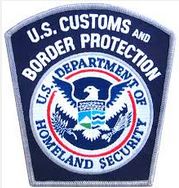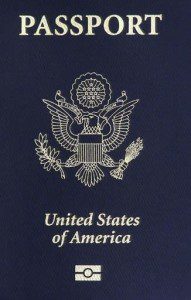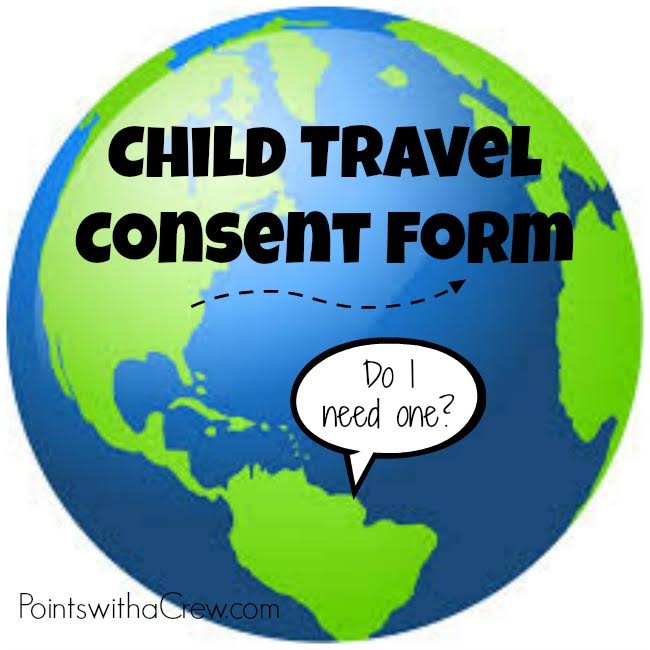A few years ago, when I was traveling to Canada with my son to attempt to set a world record for the fastest time to jump in all 5 Great Lakes, I realized that one thing that we would need to bring is a Child Travel consent form.
What is a Child Travel consent form
A Child Travel consent form is a document, signed by a non-traveling parent, that gives someone (usually but not always the other parent) permission to take their child across a country border. It can also be used if a child is traveling with grandparents or other family members, or with a school group
While the Child Travel consent form is typically used when crossing country borders, if your child is traveling with neither parent, a Child Travel consent form can come in handy if problems arise and there is any question about whether there is parental consent.
Only one parent traveling with a child
The main reason for a Child Travel consent form is to help crack down on parent kidnapping (where an estranged parent takes a child across a country border) and also reducing sex trafficking.
Child traveling with no parents
If your child is traveling with neither parent, such as with grandparents or with an organized school group, a Child Travel consent form should be signed by BOTH parents.
Examples of a Child Travel consent form
 The US Customs and Border Patrol recommends that Child Travel consent form include:
The US Customs and Border Patrol recommends that Child Travel consent form include:
- Who
- What
- Where
- When
- Why
- Contact information for the absent parent(s).
The CBP also suggest that the letter be notarized. When my son and I were going to Canada, since our local credit union has a notary on staff, it was not a big deal to get our child travel consent form notarized. Most banks also have a notary and will notarize things for free, if you’re a customer. And if you’re like me and signing up for checking account deposits at every single bank, you should have plenty of options to choose from, right?!?!!? 😀
The CBP mention that they may not ask to see the Child travel consent form, but if they do ask for it and you DON’T have it, they may detain you while they investigate the situation. In our case, I just gave our child travel consent form to the border patrol officer along with my passport.
Note that while having a Child Travel consent form is not a legal requirement for the United States, many other countries DO have such a requirement, and it could mean that you are denied entry at the border. Canada is apparently particularly strict in this regard.
One useful website I found was ChildTravelConsent.com, which lets you put in the details of your travel and will print out a Child Travel consent form for you to use.
 Other documents to bring
Other documents to bring
While a notarized child travel consent form is the minimum I’d recommend bringing, families with more complicated custodial situations might want to bring other documents. Divorced parents that share custody of a child should additionally bring a copy of the legal custody arrangement in addition to the child travel consent form signed by the other parent.
While US Citizens can no longer cross the Canadian border without a passport, children under 16 do NOT need a passport to cross, but instead can cross with just their birth certificate. When my son and I crossed from the US to Canada (and back to the US) (and then back to Canada) (and then back to the US), he was only 10, so I just brought my own passport, his birth certificate, and a child travel consent form signed by his mother. Children ages 16-18 that are traveling with an adult supervised school group, religious group, social or cultural organization, or sports team may also cross without a passport.
Not a document to bring, but it is possible that older children will be questioned individually by the Border Patrol officer, so it’s a good idea to prepare your children that it might happen, and what kinds of questions to expect. On my single-parent border crossings, we were detained once, but nobody ever questioned my son specifically, but he was ready (I hope!)
Anything else? Any experiences to share about your adventures crossing the border with your kids? Did you have a Child Travel consent form? Did it come in handy?
This site is part of an affiliate sales network and receives compensation for sending traffic to partner sites, such as thepointsguy.com. This may impact how and where links appear on this site. Responses are not provided or commissioned by the bank advertiser. Some or all of the card offers that appear on the website are from advertisers and that compensation may impact on how and where card products appear on the site. Any opinions expressed in this post are my own, and have not been reviewed, approved, or endorsed by my advertising partners and I do not include all card companies, or all available card offers. Terms apply to American Express benefits and offers and other offers and benefits listed on this page. Enrollment may be required for select American Express benefits and offers. Visit americanexpress.com to learn more. Other links on this page may also pay me a commission - as always, thanks for your support if you use them



 Dan Miller travels with his wife and 6 (SIX!) children. He loves to help families travel for free / cheap, especially larger families. If you are looking for help, drop him an email at
Dan Miller travels with his wife and 6 (SIX!) children. He loves to help families travel for free / cheap, especially larger families. If you are looking for help, drop him an email at 
What about children whose biological parents are divorced and one is the sole legal custodian? Which countries recognize that authority and which do not? Personal experience – it is difficult to get the non-custodial parent to sign a letter.
I would think if you have a custodial document saying that you are the sole legal custodian, you would probably be okay, but you might want to check with the CBP
My immediate and extended family have a huge number of entries into the U.S. — a large three figure number would be low-balling it — where only one custodial parent was traveling with the children; and yet I can’t recall anyone in my family being asked to present a consent letter to U.S. CBP or its predecessor at any point in the last 20 years or more under such conditions.
And now given the ubiquity of technology for cheap/free voice/video calls, an offer to video call the other custodial parent/guardian would probably more than satisfy the U.S. CBP in the rare chance that they think you are smuggling your own US children back into the U.S.
Most countries don’t require such a travel consent forum as a condition of being admissible.
Given how easily such documents can be made so as to mislead, I’m sure that border control authorities would be better off ignoring these consent letters and rather spending that time focusing on the interaction between the involved parties at the passport control counters or asking for a phone/video call if really suspicious and the child is able to communicate some simple words.